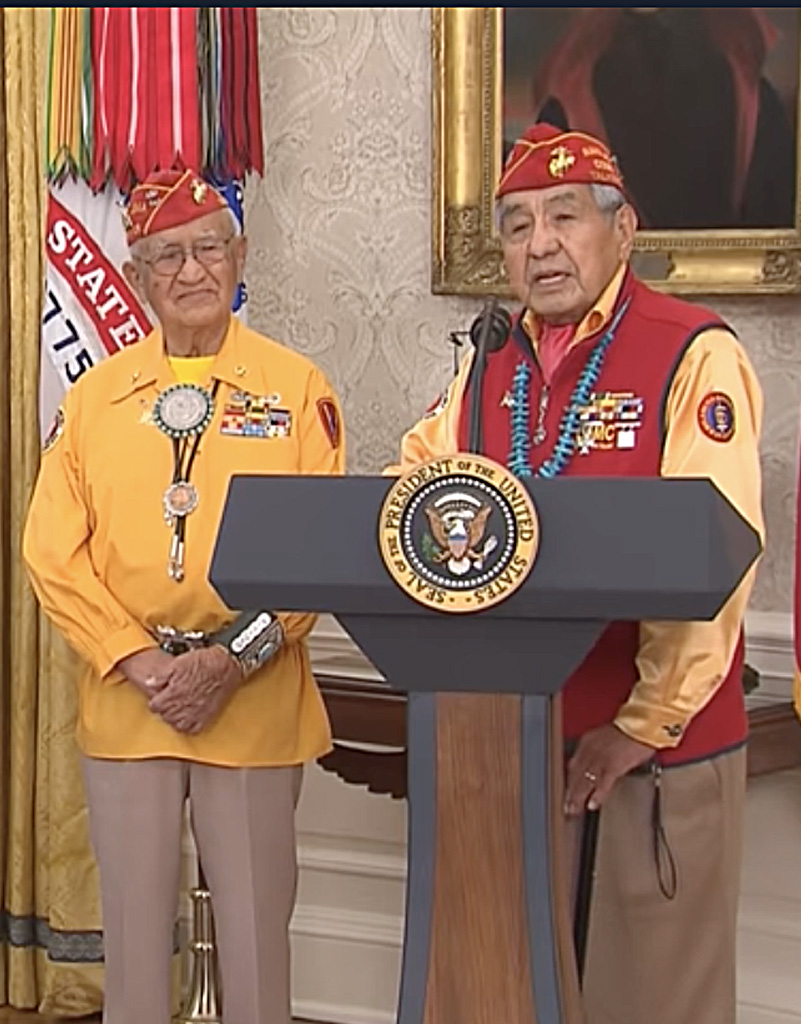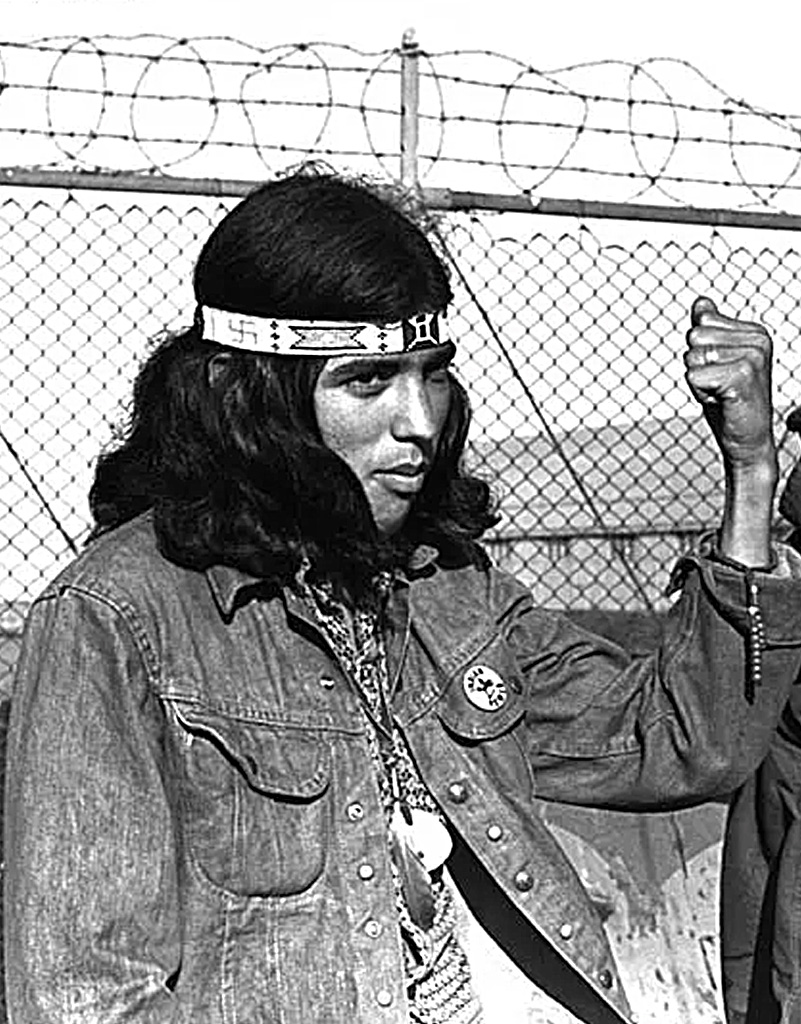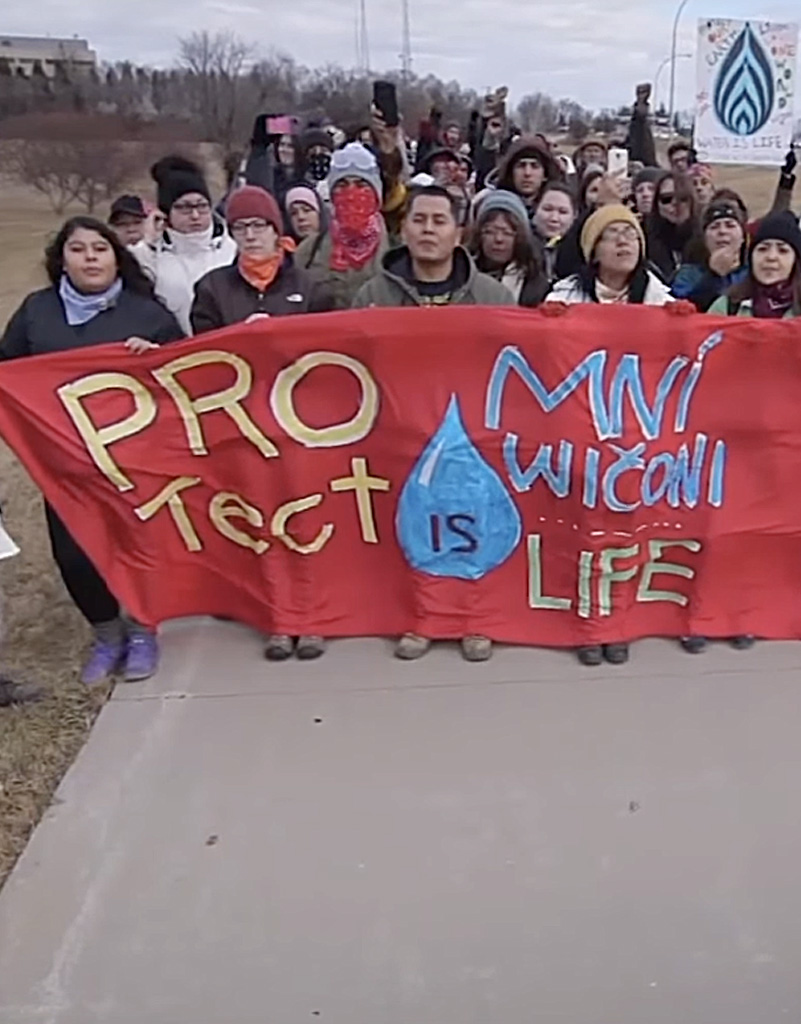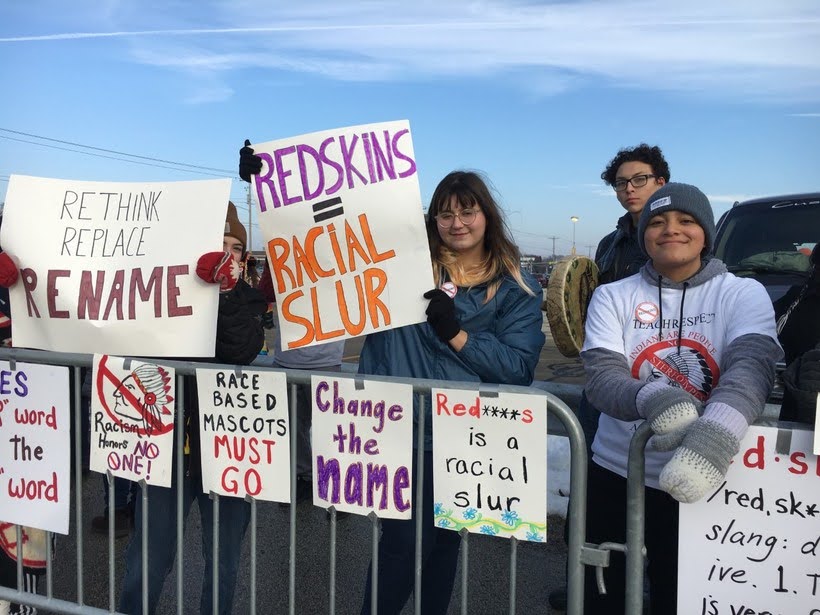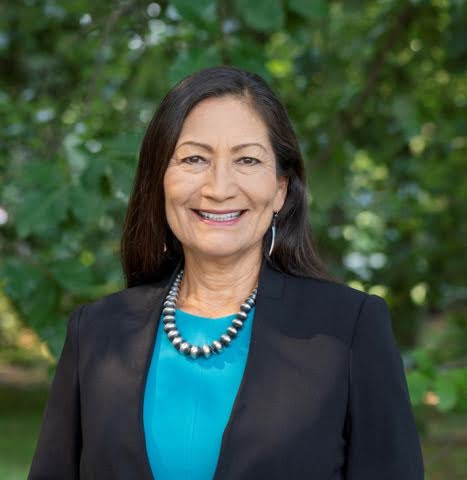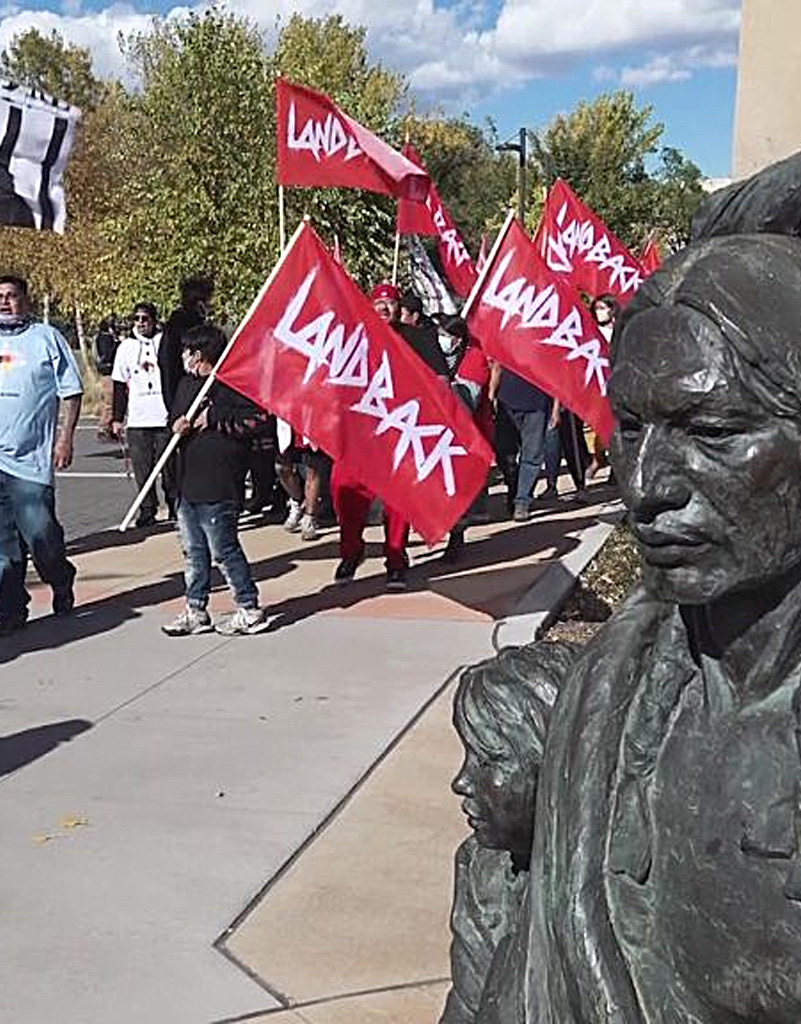Outcomes
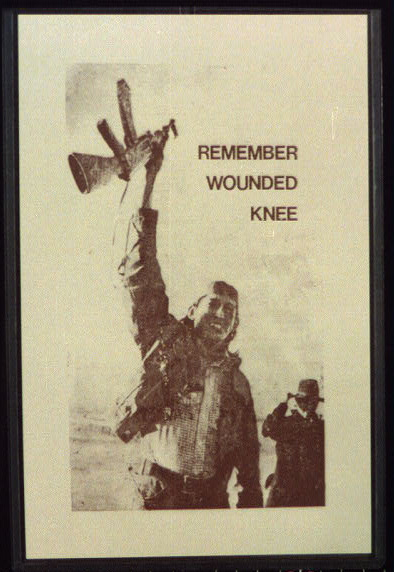
“Remember Wounded Knee.” Photographed March 9, 1973. Poster showing Bobby Onco, a Kiowa, and member of the American Indian Movement (AIM), holding up rifle. Photograph was taken after a ceasefire agreement between AIM forces and federal marshals at Wounded Knee, Pine Ridge Reservation, South Dakota. Library of Congress
At age 24, Wilma Mankiller who joined the occupation at Alcatraz, said, “When Alcatraz occurred, I became aware of what needed to be done to let the rest of the world know that Indians had rights, too.” Mankiller continued her activism through her work as a social worker, housing and development organizer, and the first female Principal Chief of the Cherokee Nation from 1985 to 1995.
Journalists from Native communities throughout the country investigate the past and report on the rights and struggles of American Indian citizens today. ICT (formerly Indian Country Today) has a team of reporters who report on key issues facing American Indian communities ranging from the lack of health care during COVID on the Navajo Nation to issues like the suppression of the American Indian vote.
As the civil rights movements of the 20th century advanced, protest by American Indians became a vital part of the re-examination of oppression in U.S. history. Russell Means emerged as a leading spokesman for the American Indian Movement, which held demonstrations at Alcatraz Island in the San Francisco Bay (1969-71), at Mount Rushmore (1971), and at Wounded Knee (1973).
Consider the essential question in our case study: How did racism and cultural biases affect the ways in which journalists in the US reported on Native American issues? Then consider the impact that Native Americans holding positions of editors, reporters, podcast hosts, and photojournalists might have on reducing racism and cultural biases.
Activism has historically been a part of American Indians way of life and informing the public about Native activism is essential to their fight for their land, sovereignty, and for their civil rights.
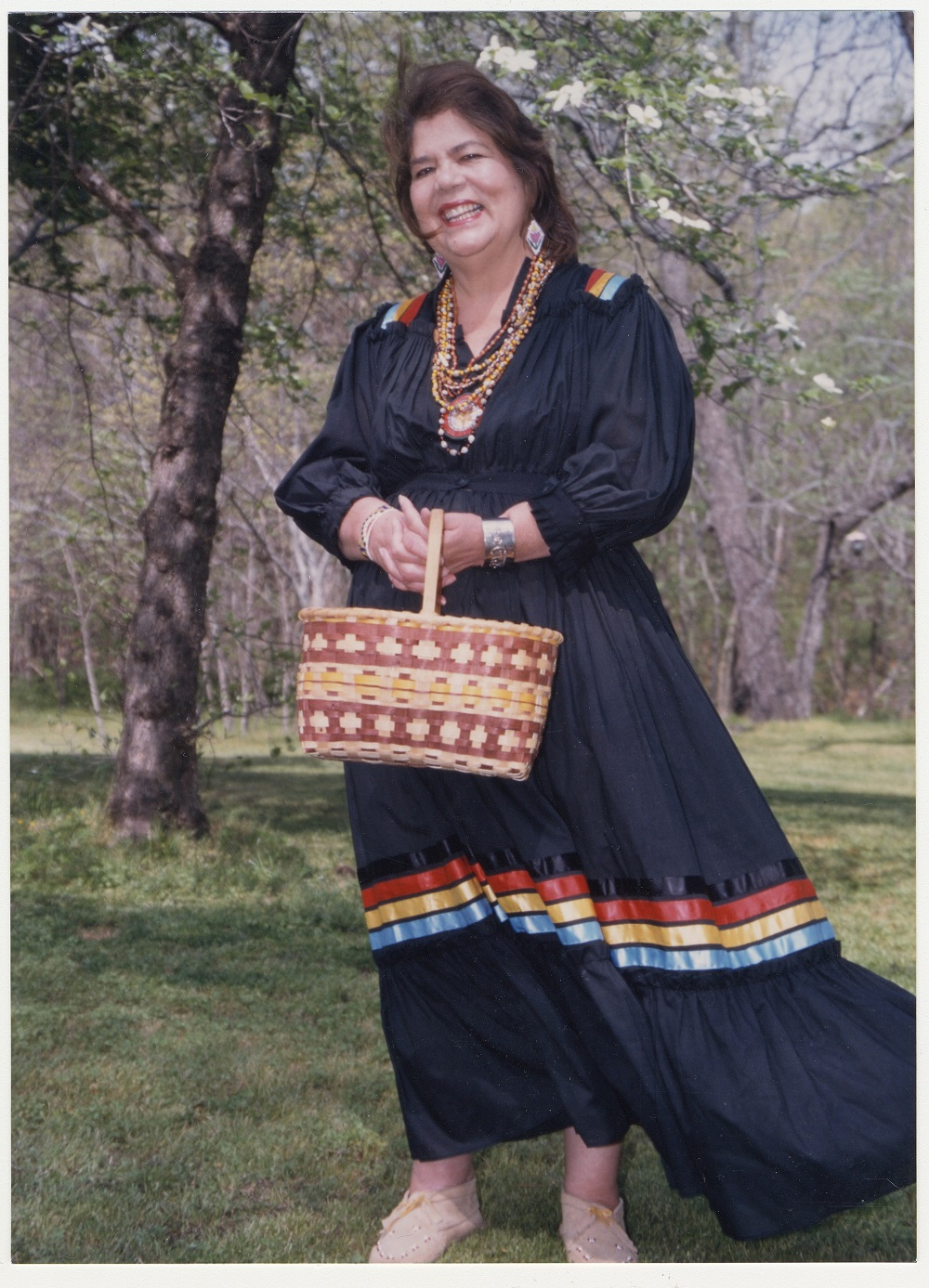
Wilma Mankiller. Photographer: Charlie L. Soap, activist and husband of Wilma Mankiller. New York Historical Society via the Library of Congress
ICT’s Jourdan Bennett-Begaye, Diné (Navajo), was a guest on the PBS NewsHour Classroom program Educator Voice to discuss pioneering American Indian suffragists for the 100th anniversary of the 19th Amendment. She discussed women like Zitkála-Šá (Red Bird) whose powerful, poetic voice helped many understand why women’s suffrage was so critical to democracy as well as several modern-day Native women activists who continue the fight for civil rights. In 2022, Bennett-Begaye herself made news when she became the first woman chief news executive of ICT.

Jourdan Bennett-Begaye interviewing Cherokee Nation Delegate Kim Teehee in October 2019 in Albuquerque, New Mexico. Photo by Tomás Karmelo Amaya
In recent years, governments and institutions, through the practice of land acknowledgment, remind Americans that they live on lands that were once inhabited by American Indians. You can see an example for Washington, DC, here. However, efforts by members of American Indian to demand the rightful ownership of their ancestral homelands continue today.
In 2015, the Wamponoag tribe, who helped the pilgrims and were later slaughtered by them, were denied the right to gain back their land on Martha’s Vineyard. Efforts to return land in the Black Hills of South Dakota, including Mt. Rushmore, are also underway.
We encourage you to research Native American land issues to learn more about the work of tribal governments and Native activists that take place across the United States.
In 2021, the Department of the Interior, led by Secretary Deb Haaland, Laguna Pueblo tribe, became the first indigenous person to hold that position or any position in a US president’s cabinet.
Haaland soon launched the Federal Indian Boarding School Initiative of which she said, “I know that this process will be painful and won’t undo the heartbreak and loss that so many of us feel, but only by acknowledging the past can we work toward a future that we’re all proud to embrace.”

“Report details brutal treatment of Indigenous children attending U.S. boarding schools.” PBS NewsHour video and transcript. May 11, 2022.
The 2022 investigative report described the sexual and physical assault students who were forced to attend Indian boarding schools experienced from 1819 to 1969, and the long-term effects of this trauma on the generations that followed.
There’s so much more — use Library of Congress — a quick search yielded this information about and lessons on Native American Boarding schools.
Discuss the following questions:
- What is your reaction in response to the outcomes surrounding American Indian issues? What questions do you have?
- Does land acknowledgement serve a purpose in the context of American Indians issues? If yes, what purpose might it serve? What might it lack?
- What impact do you think news organizations like ICT have on American Indian people today? How about the impact on those who are not American Indian?

